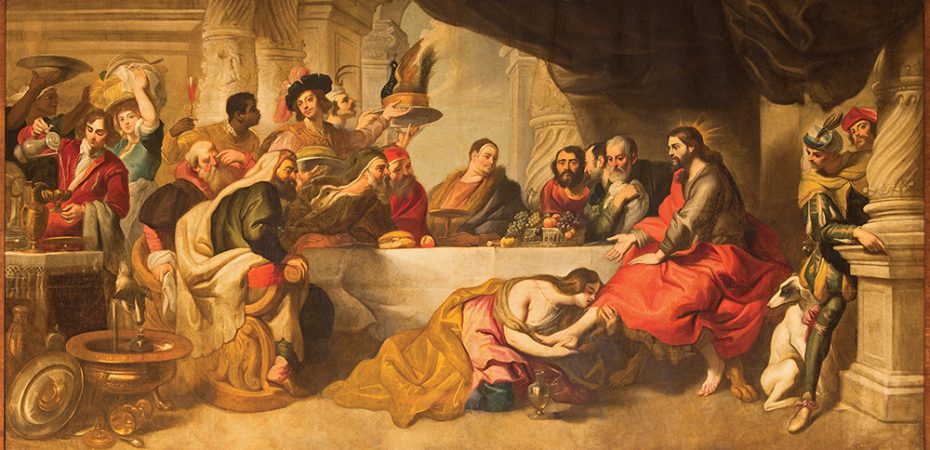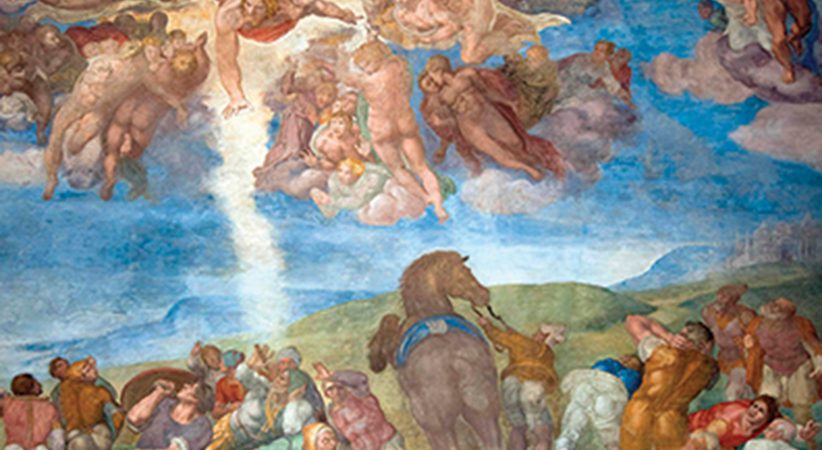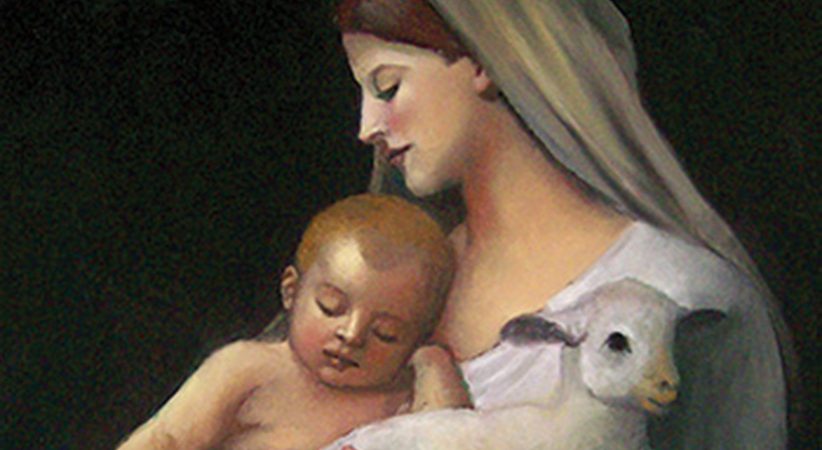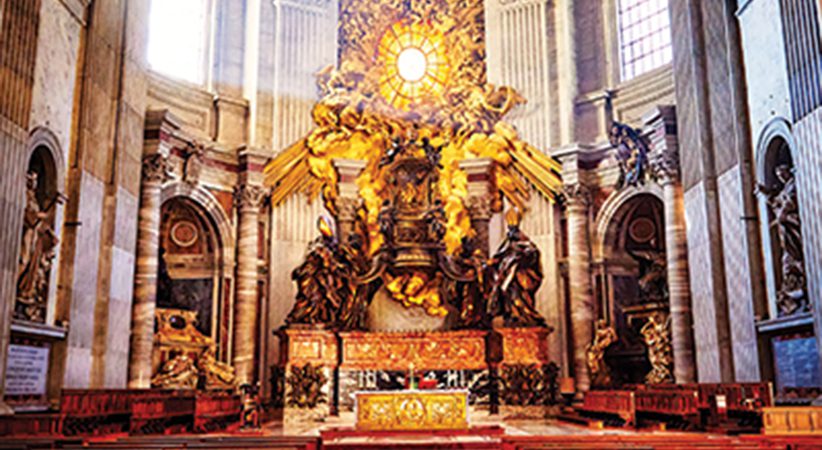Causing Confusion
Even in the early Church, Christ’s teachings were hard to follow
Father Bill Waters Comments Off on Causing Confusion
I have heard it said many times from many people that Pope Francis confuses them. I would like to say that I believe he is in good company, because Jesus Christ in his day confused many people.
Since Pope Francis was elected pope on March 13, 2013, he has made scores of headlines but not many changes to actual Church teaching (with the only notable one being his altering of the Catechism’s wording on the death penalty). Very often when questions are asked about hot-button issues such as abortion, homosexual marriages, contraception and sexuality in general, Pope Francis very clearly says he upholds the positions of the Church, because “I am a son of the Church.”
How is it, then, that people get confused? I think it happens because he realizes everything is not always clearly black and white and, consequently, he does not approach everything with rigidity. He continually talks about mercy and inclusiveness. That approach reminds me of Jesus.
The Company Jesus Kept

Jesus hung out with prostitutes and tax collectors, but he never said that the things they did were right. “While he was at table in [Matthew’s] house, many tax collectors and sinners came and sat with Jesus and his disciples. The Pharisees saw this and said to his disciples, ‘Why does your teacher eat with tax collectors and sinners?’ He heard this and said, ‘Those who are well do not need a physician, but the sick do. Go and learn the meaning of the words, “I desire mercy, not sacrifice”’” (Mt 9:10-13). I am sure the Pharisees were confused.
I try to imagine the reaction of people when Jesus told the chief tax collector, Zacchaeus, that he was going to his house for dinner (see Lk 19:1-10). I feel confident that their reaction was one of confusion.
In Luke 7:36-50 we read that Jesus went to the home of a Pharisee and, as he took his place at the table, a “sinful woman” went to the house and anointed Jesus. He was criticized that he allowed her to touch him as she kissed them and anointed them with oil. Significantly, it was not just a small amount of oil as we use at baptisms, confirmations, ordinations and the Sacrament of the Anointing of the Sick. We are told it was an alabaster flask of ointment — no small expense for the time and place. Those in attendance had to be confused.
Christ’s Healing Miracles
One of the most familiar stories in the Scriptures is Jesus not condemning the woman caught in adultery (see Jn 8:1-11). The scribes and Pharisees brought her to Jesus. It was legal to have her die by capital punishment via public stoning. We do not know what Jesus wrote on the ground. It has been speculated he wrote the sins of the Pharisees and scribes who were present. They fled, and Jesus told her, “Go, and from now on do not sin any more.” I would love to have heard the conversation the scribes and Pharisees had when they gathered at the local watering hole that evening. They had to be confused.
It was the law not to pick heads of grain on the Sabbath. When the apostles did just that (see Mt 12:1-8), the Pharisees had to be confused when Jesus responded, “the Son of Man is Lord of the Sabbath.”
Jesus often broke the law concerning the Sabbath. It was on the Sabbath he cured the woman who was crippled for 18 years (see Lk 13:10-17). There had to be confusion when they criticized Jesus for curing on the Sabbath, as the leader of the synagogue told Jesus that there were six other days for work to be done, but Jesus asked which one of them would not untie his donkey and give the donkey water on the Sabbath. He said, “This daughter of Abraham, whom Satan has bound for 18 years now, ought she not to have been set free on the Sabbath day from this bondage?”
It was on the Sabbath that Jesus cured the man with a withered hand (see Mk 3:1-6). They had to be confused when Jesus asked if it was lawful to do good rather than to do harm on the Sabbath, to save life rather than to kill. We are familiar with the man who was ill for 38 years (Jn 5:1-18), and had no one to put him in the Bethesda pool when the water was stirring up, and Jesus told him to pick up his mat and walk. John tells us the Jews wanted to kill him, not only because he was breaking the Sabbath, but he also was calling God his own father, thereby making himself equal to God. Jesus certainly had them confused.
Christ’s Body and Blood
The Eucharist is central for us as a faith community. There is no Catholic Church without the Eucharist. It is the sign of our unity and the bond of our community — the source and summit of our lives. When Jesus told his followers that there is no eternal life without eating his body and drinking his blood (see Jn 6:22-59), they must have thought he was talking about cannibalism. They even said, “How can this man give us [his] flesh to eat?”
Jesus never said to them that they were taking him too literally, nor did he reword what he said so that they would accept it. He repeated his statement three times. They were obviously confused as they said, “Is this not Jesus, the son of Joseph whose father and mother we know?” (Jn 6:42). Many in the crowd even admitted their confusion, as they said, “This saying is hard; who can accept it?” Many could not, and, “As a result of this, many [of] his disciples returned to their former way of life and no longer accompanied him.”
Other Examples
It doesn’t take much imagination to know people were confused as Jesus talked to them in parables. Someone would leave the 99 to go after one lost sheep? A foreigner would help the man who was knocked off his horse and robbed? A father would throw a party for his younger son upon his return after he squandered all his inheritance? The rich man would go to hell while Lazarus would go to heaven? Sounds pretty confusing.
| ‘Those Who Are Rigid’ |
|---|
|
“Be careful around those who are rigid.
Be careful around Christians — be they
laity, priests, bishops — who present
themselves as so perfect, rigid. Be careful.
There’s no Spirit of God there. They lack
the spirit of liberty.”
— Pope Francis, homily, Oct. 16, 2018 |
We know Jesus had to confuse people when he went against the culture of his day by being accompanied by women (see Lk 8:1-3), committing an act of religious and civil disobedience when he cleansed the Temple (Mk 11:15-19), speaking up for the poor (Lk 6:20), not demanding that the disciples follow the fasting regulations (Mk 2:18-20), insisting that the children be allowed to come to him (Mk 10:13-16) and insisting that he act like a servant in washing the feet of his disciples (Jn 13:1-17).
There are many other things Jesus did that caused confusion, but as St. John suggests, too many to be included here (see 20:30) — for example, “Do you think I have come to bring peace? No, I tell you, but rather division” (Lk 12:51); “Love your enemies, pray for those who persecute you” (Mt 5:44). I would love to have heard the reactions to these statements and many others like them.
Forming the Conscience
In many of these examples and others, Jesus went beyond the letter of the Law. This is exactly what led to his crucifixion — by speaking up for what he believed was right. He was following his conscience, which the Church traditionally has said we have to do (CCC, Nos. 1776-1794). We, however, have not always done a good job of guiding people about how to form a moral conscience. In his exhortation Amoris Laetitia, Pope Francis writes: “We … find it hard to make room for the consciences of the faithful, who very often respond as best they can to the Gospel amid their limitations, and are capable of carrying out their own discernment in complex situations. We have been called to form consciences, not to replace them” (No. 37).
Pope Francis is quoted by Catholic journalist John Allen Jr. in “The Francis Miracle” (Liberty Street, $27) as saying, “Rigid religiosity is disguised with doctrines that claim to give justification, but in reality deprive people of their freedom and do not allow them to grow as persons.” Allen reminds us that at the end of the 2014 Synod of Bishops that Pope Francis said the Church must not succumb to a “hostile rigidity,” a fussy legalism devoid of compassion and, at the same time, must reject “a destructive do-goodism” and a “false mercy,” a touchy-feely morality incapable of calling sin by its name. He went on to say the Church must not impose “impossible burdens” on people while not abandoning its core principles in order to win approval.
Consequently, with this mentality and with this approach, Pope Francis does not respond with rigid answers when asked about homosexuality (“Who am I to judge?”) and people in irregular marriages receiving holy Communion, or when he washes the feet of Muslims and women on Holy Thursday. If this confuses people, I say he is in good company — the company of Jesus Christ.
FATHER BILL WATERS, OSA, is pastor of St. Augustine Parish in Philadelphia and also has served as vocation and formation director for the Augustinians.





